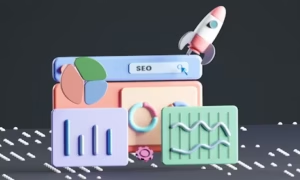The advent of the internet has revolutionized the way businesses operate. B2B e-commerce has become a preferred mode of conducting transactions for many businesses, as it saves time and reduces operational costs. The development of a B2B e-commerce website has become a crucial aspect of running a successful business in today’s digital age. Developing a B2B ecommerce website can be a complex and time-consuming task, but with the right guidance and tools, it can also be a highly rewarding experience. In this article, we’ll outline a step-by-step process for developing a B2B e-commerce website, including tips for making the most of custom application development services.
Step 1: Define your goals and target audience:-
Before you start developing your B2B e-commerce website, it’s important to understand what you want to achieve with the site and who your target audience will be. Defining these goals and target audience will help you make informed decisions about the design, functionality, and content of your website. Some common goals for B2B ecommerce websites include increasing sales, improving customer engagement, and enhancing the customer experience.
Step 2: Conduct a competitor analysis:-
Once you have a clear understanding of your goals and target audience, you should conduct a competitor analysis to understand what other B2B e-commerce websites are offering and how you can differentiate yourself. This analysis should include a review of the design, functionality, and content of your competitors’ websites, as well as an assessment of their strengths and weaknesses. This information can help you make informed decisions about the features and functionality you should include on your own website.
Step 3: Choose a right platform:-
There are many different platforms available for developing B2B e-commerce websites, including Magento, Shopify, Big commerce and WooCommerce. You need to choose a platform that is secure. Each platform has its own strengths and weaknesses, so it is important to choose one that aligns with your goals, target audience, and budget. Consider factors such as the platform’s ease of use, scalability, customization options, and integration with other systems.
Step 4: Design your website:-
Once you have chosen the right platform, it is time to design your website. The design of your B2B e-commerce website development is critical to its success, so it’s important to put thought into the look and feel of the site. Consider factors such as the color scheme, font choices, and layout of the site, as well as the overall user experience. You need to ensure that your website is visually appealing, easy to navigate, and provides a smooth user experience. You should also consider the responsiveness of your website as more and more customers are using mobile devices to shop online so you should also consider the needs `of your target audience, such as their preferred device for accessing the site and the information they are looking for.
Step 5: Implement key features and functionality:-
There are a number of key features and functionality that are essential for a successful B2B e-commerce website, including an intuitive search function, a user-friendly checkout process, and a secure payment gateway. In order to make your e-commerce website successful, you should also consider incorporating features such as product comparisons, customer reviews and ratings, and a wish list function.
Step 6: Develop a content strategy:-
A well-designed B2B e-commerce website is only half the battle; the content you put on the site is just as important. Develop a good content strategy that aligns with your goals and target audience, and includes product descriptions, blog posts, and other relevant information. You should also consider the tone of your content and make sure it is engaging and easy to understand.
Step 7: Utilize custom application development services:-
Custom application development services can be an invaluable resource when developing a B2B e-commerce website. These services can help you create custom features and functionality that are specific to your business needs and goals. For example, you may need a custom CRM system to manage customer relationships, or a custom order management system to streamline your order processing. Custom application development services can also help you integrate your website with other systems, such as your accounting software or inventory management system.
Step 8: Test your website:-
Once you have integrated all the essential features, it is time to test your website. You need to ensure that your website is functioning as expected and that there are no technical issues. You should also test the website’s performance and make sure that it is loading quickly.
Step 9: Launch Your Website:-
After thoroughly testing your website, it is time to launch it. This is an exciting moment as it marks the beginning of your journey as a successful B2B e-commerce website. You should make sure that your website is optimized for search engines to improve its visibility and ranking.
Step 9: Optimize for search engines:-
Search engine optimization (SEO) is a critical aspect for any website, including B2B e-commerce sites. To optimize your site for search engines, you should conduct keyword research, write compelling product descriptions, and use meta tags and header tags appropriately. You should also consider incorporating blog posts and other content that aligns with your target audience’s interests and needs.
Step 10: Monitor and analyze:-
Once your B2B e-commerce website is up and running, it’s important to monitor and analyze your site’s performance to identify areas for improvement. This may include tracking sales and conversion rates, monitoring user engagement, and analyzing site traffic. You should also regularly review your content and make updates as needed to ensure that your site is staying relevant and providing value to your target audience.
CONCLUSION:-
In conclusion, developing a B2B e-commerce website can be a complex and challenging process, but with careful planning and execution, it can also be a highly rewarding experience. By following the steps outlined above, and making the most of custom application development services, you can create a B2B e-commerce website that is tailored to your business needs and provides a great experience for your customers.


































